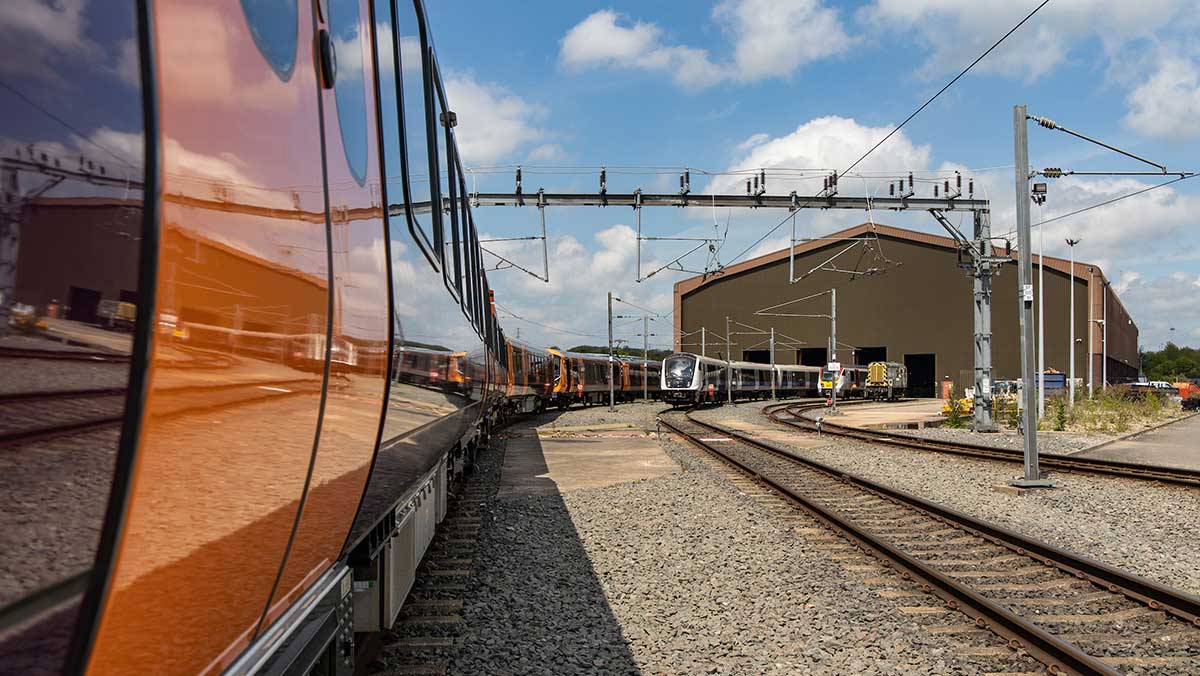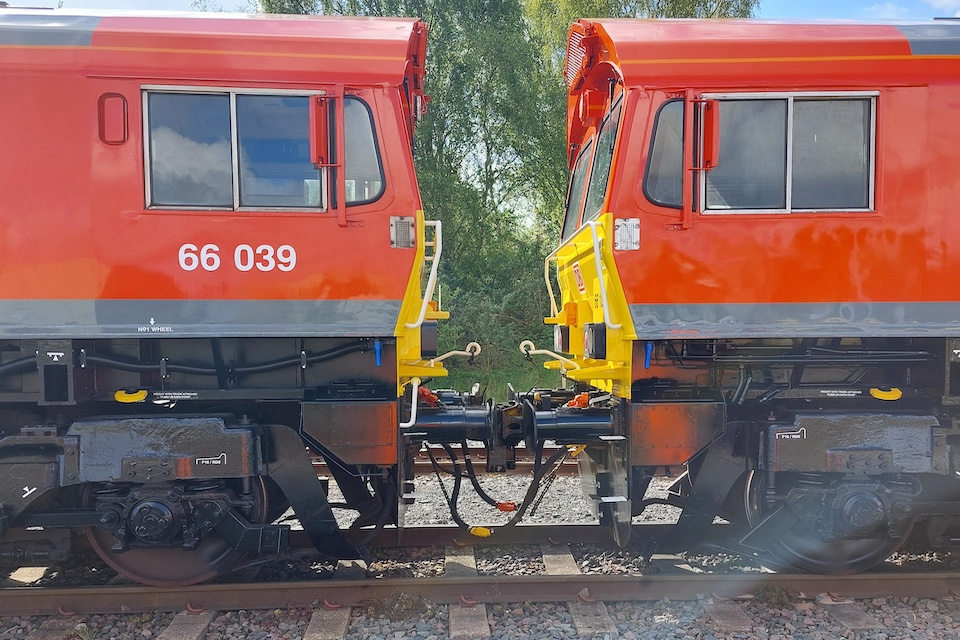A new route for a ’66. DB Cargo UK has offered up one of its workhorses of the rail freight industry. The first “Shed” in the dynamic signalling revolution has had a digital makeover. The pathfinder locomotive has been retrofitted and moved on to begin dynamic testing.
They’ve been around for over a quarter of a century, and there are around five hundred of them in service. Now the sturdy diesel stalwart is getting a makeover. The first locomotive in Britain’s principal freight fleet, the EMD Class 66, has been fitted with digital signalling equipment. Right now, the familiar workhorse is moving on to unfamiliar rails for dynamic testing on a test track, having successfully progressed through static testing.
Testing, testing, zero, three, nine
DB Cargo locomotive 66039 is the ‘First in Class’ (FiC) to be retrofitted with European Train Control System (ETCS) equipment. With the fitment at the Progress Rail depot in Doncaster complete, it was hauled last Friday (26 April) to Network Rail’s Rail Innovation and Development Centre (RIDC) in Leicestershire. RIDC is ready for ETCS testing, and the loco will be put through its paces on the test track in the coming weeks.

The RIDC Melton Mowbray provides a safe environment for testing new and modified rolling stock, plant, on-track machines, infrastructure, equipment, and technology. It was purpose-built by Network Rail to support both high- and low-speed testing of vehicles and infrastructure. The European Train Control System (ETCS) is a proven technology already in use in many countries in Europe and elsewhere. The East Coast Digital Programme will see the first introduction of ETCS to an intercity mainline in Great Britain.
Competitors in collaborative mood
The Class 66 is the most common type of freight loco on Britain’s rail network. According to the operators of this example, DB Cargo UK, this marks a step forward towards equipping hundreds of freight locos with’ next-generation’ digital signalling. They say this will help enable longer, faster, heavier freight trains. The FiC installation is part of a much wider programme to upgrade the East Coast Main Line, which is increasingly important for freight traffic.
It’s not just a DB Cargo thing. Within a ruthlessly competitive sector, all freight operators in the East Coast Digital Programme (ECDP) have collaborated to share learnings. In agreement, the industry has worked together on the base design with developers Siemens Mobility. That collaboration is providing the design and fitment of their “ETCS Trainguard 200” onboard equipment.
Transform everyday freight operations
“[This latest stage] marks a significant milestone for DB Cargo (UK) on the journey to becoming European Train Control System (ETCS) ready”, said Neil Ethell, their Chief Operating Officer. “Overall, the design and installation for the Class 66 has taken four years, which shows the level of complexity in a retrofitment project of this scale. We’re excited to see how it performs under rigorous testing at RIDC”.

Siemens Mobility said that the move of the locomotive into dynamic testing at the RIDC Melton Mowbray marked a major step forward for the Programme. “The retrofitting will transform the every day for freight users as well as delivering wider societal and community benefits afforded by digital signalling”, said their statement.
Challenge of transition to a digital future
Over the next few years, hundreds of freight locos will be fitted, many of which will be required to deliver ‘no signals’ operations through the East Coast Digital Programme. ECDP forms the foundation for the progressive rollout of digital signalling throughout the wider network.
The loco will now undergo dynamic testing at RIDC, and after that, the loco will accumulate 5,000 miles of fault-free running before going through the necessary regulatory approvals. “The task of retrofitting hundreds of freight locomotives is one of the biggest challenges we face in the transition to a digital future”, said Ed Akers, Network Rail’s Principal Sponsor, ECDP. “The Class 66 FiC project has required innovation, tenacity and perseverance to get to this point. The industry-wide collaboration involved is providing a strong foundation for the ongoing process of freight ETCS fitment”.